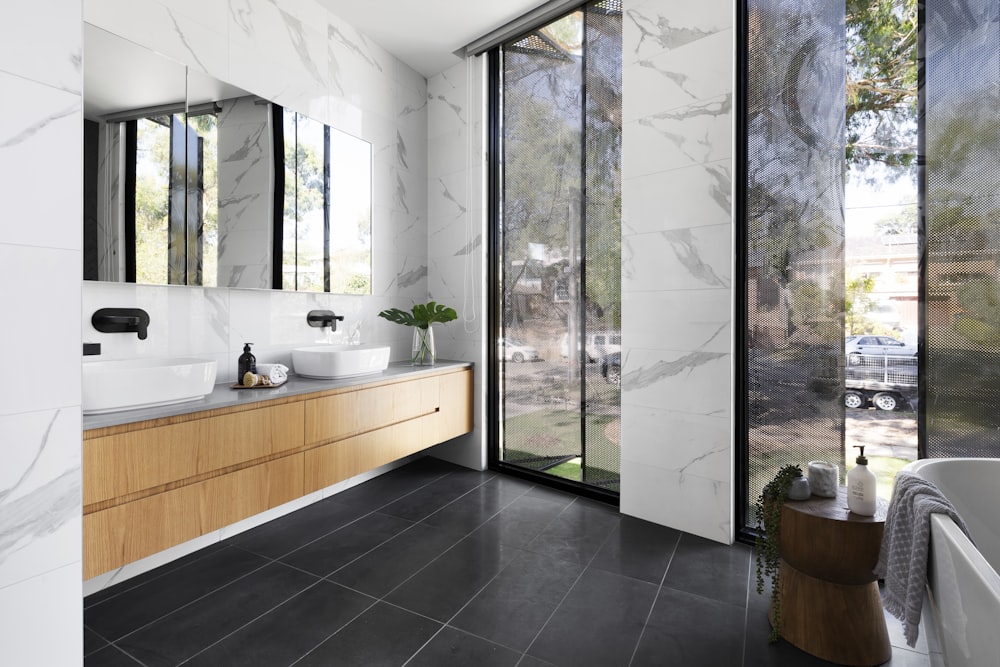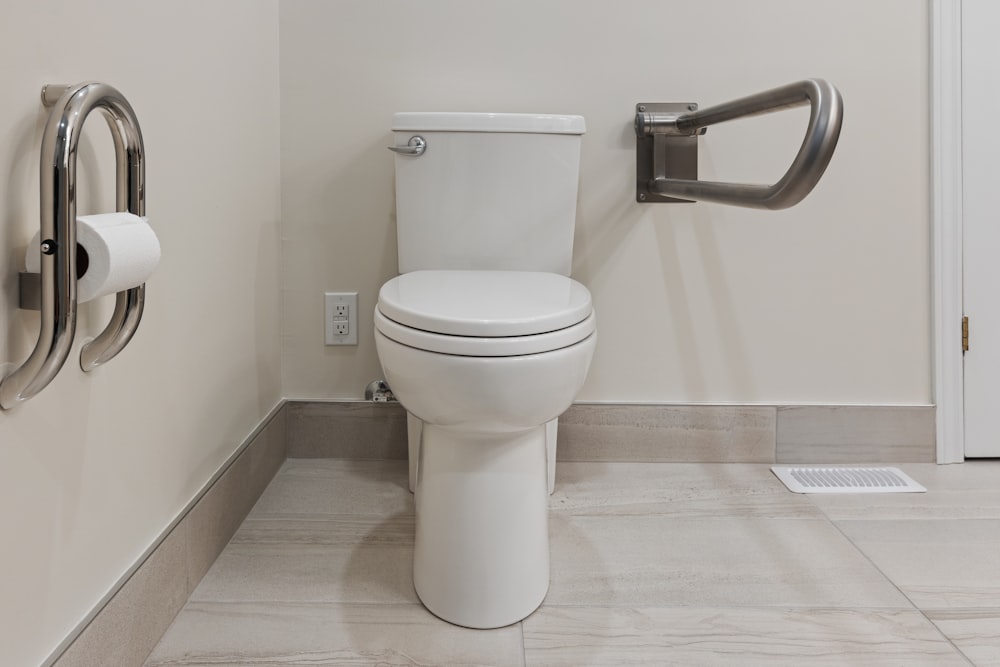DIY
Fixing a Persistent Kitchen Sink Leak Expert Solutions
Identifying the Culprit: Understanding Your Leaky Kitchen Sink
When it comes to household nuisances, few things are as aggravating as a leaky kitchen sink. The constant drip-drip-drip can drive even the most patient person to the brink of insanity. But fear not, for there are solutions to this common problem that don’t involve calling in a pricey plumber. Let’s delve into the heart of the matter and explore how to put an end to that persistent leak once and for all.
Assessing the Damage: Determining the Source of the Leak
The first step in addressing a leaky kitchen sink is to identify where exactly the leak is coming from. Is it emanating from the faucet itself, or is the issue lurking deeper within the pipes? Take a moment to carefully inspect the area under your sink for any visible signs of moisture or dripping water. This will provide valuable clues as to the origin of the leak and help you formulate a plan of action.
Tackling Faucet Leaks: Simple Solutions for a Common Problem
If the leak seems to be originating from the faucet, don’t panic. Oftentimes, this type of leak can be remedied with a few basic tools and a little know-how. Start by turning off the water supply to the faucet and then disassembling the fixture to inspect the various components for wear and tear. In many cases, a worn-out washer or O-ring is to blame for the leak and can be easily replaced with a trip to your local hardware store.
Addressing Pipe Leaks: Dealing with a More Complex Issue
If the leak appears to be stemming from the pipes beneath your sink, you may be dealing with a more complex problem that requires a bit more finesse to fix. Begin by tightening any loose fittings or connections and inspecting the pipes for signs of corrosion or damage. If you spot any cracks or holes, you’ll need to replace the affected section of pipe using a pipe cutter and some replacement piping.
DIY vs. Professional Help: Knowing When to Call in the Experts
While many kitchen sink leaks can be successfully remedied with some DIY know-how, there are instances where it’s best to leave the job to the professionals. If you’re uncomfortable working with plumbing or if the leak is particularly severe, don’t hesitate to reach out to a licensed plumber for assistance. While it may cost you a bit more upfront, hiring a professional can save you time, frustration, and potentially costly repairs down the line.
Preventative Measures: Avoiding Future Leaks
Once you’ve successfully addressed the leak in your kitchen sink, it’s important to take steps to prevent future leaks from occurring. Regularly inspect the area under your sink for any signs of moisture or damage, and promptly address any issues you encounter. Additionally, consider investing in a leak detection system or adding a drip tray beneath your sink to catch any minor leaks before they have a chance to cause significant damage.
Conclusion: Putting an
Budget-Friendly Home Decor Creative Ideas for Every Room
Budget-Friendly Home Decorating Ideas: Transform Your Space Without Breaking the Bank
When it comes to decorating your home, it’s easy to feel overwhelmed by the costs. From furniture to accessories, the expenses can quickly add up. But who says you need to spend a fortune to create a stylish and inviting space? With some creativity and strategic planning, you can achieve the look you want without breaking the bank.
Getting Started: Assess Your Space and Set a Budget
Before diving into decorating, take some time to assess your space and determine what you want to achieve. Think about the style and atmosphere you want to create, as well as any specific needs or preferences you have. Once you have a clear vision in mind, it’s time to set a budget. Be realistic about how much you’re willing to spend and prioritize where you want to allocate your funds.
DIY Decor: Tap Into Your Creativity
One of the best ways to save money on home decorating is by embracing the do-it-yourself (DIY) approach. From painting old furniture to creating your own artwork, there are countless ways to add personal touches to your space without breaking the bank. Get creative and think outside the box – you’ll be surprised at what you can accomplish with a little imagination and resourcefulness.
Thrifty Shopping: Hunt for Deals and Discounts
When it comes to furnishing your home, there’s no need to pay full price. Instead, hunt for deals and discounts to stretch your budget further. Shop at thrift stores, garage sales, and flea markets for unique finds at affordable prices. You can also keep an eye out for sales and promotions at your favorite home decor stores, or consider shopping online for even more savings.
Repurpose and Upcycle: Give Old Items New Life
Instead of throwing away old or outdated items, consider repurposing and upcycling them to give them a new lease on life. Turn an old dresser into a stylish storage solution, or transform vintage jars into chic vases. Not only will you save money by repurposing items you already own, but you’ll also add character and personality to your space.
Focus on Key Pieces: Invest Where It Matters Most
When decorating on a budget, it’s important to prioritize where you want to invest your money. Focus on key pieces that will have the biggest impact on your space, such as a statement sofa or a beautiful area rug. By splurging on a few select items, you can elevate the look of your entire room without spending a fortune on every little detail.
Embrace Minimalism: Less Is More
In a world of excess, sometimes less really is more. Embrace the principles of minimalism by decluttering your space and focusing on quality over quantity. Choose a few carefully curated pieces that bring you joy and serve a purpose, rather than filling your home with unnecessary clutter. Not only will this save you money in the long run, but it will also create a more serene
Creative Home Ideas Inspiring Designs for Every Room”
Exploring Home Ideas for Inspired Living
Unleashing Creativity with Home Ideas
Your home is a canvas waiting to be painted with creativity and innovation. With the right home ideas, you can transform every corner into a space that reflects your personality and style. Let’s dive into a world of inspiration and explore how you can infuse new life into your living environment.
Modern Home Ideas for Contemporary Living
In today’s fast-paced world, modern home ideas offer sleek designs and functional solutions tailored to the needs of modern life. Think clean lines, minimalist decor, and smart technologies that streamline daily routines while creating a visually stunning atmosphere. From open-plan layouts to minimalist furnishings, modern home ideas embrace simplicity without compromising on style.
Embracing Sustainability with Eco-Friendly Home Ideas
As awareness of environmental issues grows, more homeowners are turning to eco-friendly home ideas to reduce their carbon footprint and create healthier living spaces. From energy-efficient appliances to sustainable building materials, eco-friendly home ideas prioritize environmental responsibility without sacrificing comfort or aesthetics. Embrace sustainability and contribute to a greener future with eco-friendly home ideas.
Getting Creative with DIY Home Ideas
There’s something deeply satisfying about crafting your own decor and furnishings with DIY home ideas. Whether you’re repurposing old furniture, upcycling thrift store finds, or embarking on a full-scale renovation project, DIY home ideas empower you to unleash your creativity and put your personal stamp on your living space. Get inspired, roll up your sleeves, and let your imagination run wild with DIY home ideas.
Creating a Cozy Retreat with Rustic Home Ideas
Escape the hustle and bustle of modern life and embrace the warmth and charm of rustic home ideas. Characterized by natural materials, earthy tones, and a relaxed, welcoming atmosphere, rustic home ideas transport you to a cozy retreat in the countryside. Incorporate reclaimed wood, cozy textiles, and vintage accents to infuse your home with rustic charm and timeless appeal.
Maximizing Space with Small Space Home Ideas
Living in a small space doesn’t mean sacrificing style or functionality. With clever storage solutions, multifunctional furniture, and strategic design choices, small space home ideas allow you to make the most of every square foot. From vertical storage solutions to furniture that doubles as storage, small space home ideas help you create a stylish and efficient living environment, no matter the size of your home.
Channeling Serenity with Scandinavian Home Ideas
Scandinavian home ideas are renowned for their clean lines, understated elegance, and emphasis on natural light. Inspired by the serene landscapes of the Nordic countries, Scandinavian home ideas create a tranquil atmosphere that promotes relaxation and well-being. Incorporate light colors, natural materials, and minimalist decor to channel the effortlessly chic aesthetic of Scandinavian design in your own home.
Adding Character with Vintage Home Ideas
Vintage home ideas celebrate the beauty of bygone eras and allow you to add character and charm to your living space. Whether you’re drawn to the glamour of the Art Deco period or the nostalgia of mid-century modern design,
Upgrade Your Bathroom Faucet Replacement Essentials
Upgrade Your Bathroom with Faucet Replacement
Introduction:
Are you tired of looking at that outdated faucet every time you step into your bathroom? It might be time for an upgrade. Faucet replacement is a simple yet effective way to refresh the look and feel of your bathroom without breaking the bank. In this article, we’ll explore why you should consider replacing your bathroom faucet and provide you with all the essential tips and steps to get the job done right.
Why Replace Your Bathroom Faucet?
Subheading: Enhance Aesthetics and Style
Your bathroom faucet plays a significant role in the overall aesthetics of your bathroom. An old, tarnished faucet can make your entire bathroom look outdated and unappealing. By replacing it with a new, stylish faucet, you can instantly enhance the visual appeal of your space and bring it up to date with modern trends.
Subheading: Improve Functionality and Efficiency
Aside from aesthetics, an old faucet might also be causing functional issues. Over time, faucets can develop leaks, drips, or reduced water flow, which not only waste water but also make daily tasks like washing your hands or brushing your teeth more challenging. By replacing your faucet, you can ensure better functionality and improved water efficiency in your bathroom.
Choosing the Right Faucet
Subheading: Consider Your Bathroom Design
Before you rush out to buy a new faucet, take some time to consider your bathroom design and decor style. Your faucet should complement the overall aesthetic of your bathroom, whether it’s modern, traditional, or somewhere in between. Pay attention to factors like finish, shape, and handle design to ensure a seamless integration with your existing decor.
Subheading: Think About Functionality
In addition to aesthetics, it’s essential to choose a faucet that meets your practical needs. Consider factors like spout height, reach, and handle type to ensure that your new faucet is not only stylish but also functional and convenient to use on a daily basis.
Steps to Replace Your Bathroom Faucet
Subheading: Gather Your Tools and Materials
Before you begin the faucet replacement process, make sure you have all the necessary tools and materials on hand. This typically includes an adjustable wrench, plumber’s tape, a bucket or container for catching water, and, of course, your new faucet and any accompanying parts or components.
Subheading: Turn Off the Water Supply
The first step in replacing your bathroom faucet is to shut off the water supply to the sink. Locate the shut-off valves under the sink and turn them clockwise to close them completely. Once the water supply is off, turn on the faucet to release any remaining water pressure and drain the lines.
Subheading: Remove the Old Faucet
Next, you’ll need to remove the old faucet. Start by disconnecting the water supply lines and then unscrewing the nuts or bolts that secure the faucet to the sink or countertop. Once the faucet is loose, carefully lift it out of place and set it aside.
Subheading: Install the New Faucet
With the old faucet
Professional Techniques for Copper Pipe Leak Repair
Effective Solutions for Copper Pipe Leak Repair
When faced with a copper pipe leak, homeowners often find themselves in a stressful situation. However, with the right knowledge and tools, resolving this issue can be manageable. In this article, we’ll explore effective solutions for repairing copper pipe leaks, providing step-by-step guidance and expert tips to help you tackle this task with confidence.
Identifying the Leak
Before diving into the repair process, it’s crucial to identify the location of the leak. Start by inspecting the affected area for any signs of water damage or moisture. Look for damp spots, water stains, or puddles around the pipes. Additionally, listen for the sound of dripping water, which can help pinpoint the source of the leak. Once you’ve located the leak, mark the area for easier reference during the repair process.
Gathering the Necessary Tools and Materials
To effectively repair a copper pipe leak, you’ll need the right tools and materials on hand. This includes pipe cutters, emery cloth or sandpaper, flux, solder, a propane torch, and safety equipment such as gloves and goggles. Before starting the repair, ensure that you have everything you need readily available to streamline the process.
Preparing the Pipe
Before making any repairs, it’s essential to properly prepare the damaged section of the copper pipe. Start by shutting off the water supply to the affected area to prevent further leakage. Next, use a pipe cutter to remove the damaged portion of the pipe, ensuring that the cut is clean and straight. Once the damaged section has been removed, use emery cloth or sandpaper to clean the ends of the remaining pipe to ensure a secure connection.
Applying Flux and Solder
With the pipe prepared, it’s time to apply flux to the cleaned ends. Flux helps facilitate the soldering process by promoting the adhesion of the solder to the copper surface. Apply a thin layer of flux to both the inside of the fitting and the outside of the pipe ends. Next, carefully insert the pipe into the fitting, ensuring a snug fit. Once in place, use a propane torch to heat the joint evenly. Once the flux begins to bubble and the copper reaches the appropriate temperature, apply solder to the joint, allowing it to flow evenly around the connection.
Testing for Leaks
After completing the soldering process, it’s important to test the repaired joint for any potential leaks. Slowly turn the water supply back on and observe the repaired area for any signs of dripping or moisture. Additionally, run water through the pipes for a few minutes to ensure that the repair holds up under pressure. If any leaks are detected, revisit the soldering process to reinforce the connection as needed.
Preventive Measures
To minimize the risk of future copper pipe leaks, consider implementing preventive measures in your plumbing system. This includes regular inspections of your pipes for signs of corrosion or damage, as well as addressing any issues promptly to prevent them from escalating. Additionally, consider insulating your
Upgrade Your Bathroom Toilet Flusher Replacement Guide
Upgrade Your Bathroom: Toilet Flusher Replacement Guide
Understanding the Importance of a Functional Toilet Flusher
In the realm of bathroom fixtures, the toilet flusher often goes unnoticed until it malfunctions. Yet, it plays a vital role in maintaining a hygienic and functional restroom. A malfunctioning flusher can lead to inconvenient clogs, wasted water, and a less-than-pleasant bathroom experience. Recognizing the importance of a functional toilet flusher is the first step towards ensuring a smoothly running bathroom.
Signs It’s Time for a Replacement
Knowing when it’s time to replace your toilet flusher is crucial for preventing potential issues down the line. Some common signs of a failing flusher include weak flushing, constant running water, or difficulty flushing altogether. If you notice any of these signs, it may be time to consider a flusher replacement to restore optimal functionality to your toilet.
Choosing the Right Replacement Flush Handle
When it comes to replacing your toilet flusher, selecting the right replacement handle is essential. Flush handles come in a variety of styles, finishes, and configurations, so it’s essential to choose one that matches your toilet’s design and fits your preferences. Whether you prefer a traditional lever handle or a modern push-button design, selecting a replacement flush handle that complements your bathroom decor is key.
Gathering the Necessary Tools and Materials
Before embarking on a toilet flusher replacement project, it’s essential to gather all the necessary tools and materials. Depending on the type of flusher replacement you choose, you may need a few basic tools such as a screwdriver, adjustable wrench, or pliers. Additionally, be sure to have the replacement flush handle and any accompanying hardware on hand before beginning the installation process.
Step-by-Step Installation Process
Replacing a toilet flusher is a relatively straightforward process that can be completed in just a few simple steps. Begin by turning off the water supply to the toilet and draining the tank to prevent any spills or leaks. Next, remove the old flush handle by loosening the mounting nut or screws that secure it in place. Once the old handle is removed, attach the new flush handle using the provided hardware, ensuring it is securely fastened. Finally, turn the water supply back on and test the flusher to ensure it is functioning correctly.
Troubleshooting Common Issues
While replacing a toilet flusher is typically a straightforward process, there may be instances where issues arise during installation. Common problems include difficulty removing the old flush handle, leaks or drips after installation, or improper flushing after replacement. If you encounter any of these issues, refer to the manufacturer’s instructions or seek assistance from a professional plumber to troubleshoot and resolve the problem.
Maintaining Your New Toilet Flusher
Once your new toilet flusher is installed, proper maintenance is essential to ensure long-term functionality and performance. Regularly inspect the flush handle and accompanying hardware for signs of wear or damage, and replace any worn components as needed. Additionally, periodically check for leaks or drips around the toilet tank and address any issues
Understanding and Repairing Kitchen Sink Leaks Below
Addressing Underneath Kitchen Sink Leaks
Understanding the Issue:
Underneath kitchen sink leaks can be a real nuisance, causing damage to cabinets, flooring, and potentially leading to mold growth if left unattended. Understanding the root cause of the leak is the first step in addressing the problem effectively.
Identifying Common Causes:
There are several common reasons why leaks occur underneath kitchen sinks. These include loose connections, worn-out seals, corrosion, and even cracks in the sink basin itself. Taking the time to identify the specific cause of the leak will help in determining the best course of action for repair.
Inspecting Connections and Seals:
One of the primary areas to check when dealing with underneath sink leaks is the connections to the faucet, drain, and garbage disposal if present. Over time, these connections can become loose or damaged, leading to water seepage. Inspecting and tightening these connections, as well as replacing any worn-out seals, can often resolve the issue.
Checking for Corrosion:
Corrosion is another common culprit when it comes to underneath sink leaks, especially in older plumbing systems. Over time, metal pipes and fittings can corrode, leading to cracks and leaks. Carefully inspecting the pipes and fittings for signs of corrosion and replacing any damaged components can help prevent further leakage.
Repairing Minor Cracks:
In some cases, minor cracks may develop in the sink basin or pipes, leading to leaks. These cracks can often be repaired using epoxy putty or plumber’s tape. However, it’s essential to ensure that the area is thoroughly cleaned and dried before attempting any repairs to ensure a proper seal.
Replacing Damaged Components:
If the leak persists despite your best efforts to repair it, it may be necessary to replace damaged components entirely. This could include replacing worn-out seals, corroded pipes, or even the entire sink basin if it’s beyond repair. While this may require more time and effort, it’s essential for preventing further damage and ensuring long-term stability.
Preventing Future Leaks:
Once you’ve addressed the immediate issue of the underneath sink leak, it’s crucial to take steps to prevent future leaks from occurring. This includes regular inspections and maintenance, avoiding putting excessive weight on the sink, and promptly addressing any plumbing issues as they arise.
Seeking Professional Help:
If you’re unsure about how to address the underneath sink leak or if the problem persists despite your efforts, don’t hesitate to seek professional help. A licensed plumber will have the expertise and equipment necessary to diagnose and repair the issue effectively, saving you time, money, and frustration in the long run.
Conclusion
Remember, dealing with underneath kitchen sink leaks requires patience, attention to detail, and sometimes professional assistance. By understanding the common causes of leaks, inspecting connections and seals regularly, and taking proactive measures to prevent future issues, you can keep your kitchen sink running smoothly for years to come. Read more about kitchen sink leaking underneath







